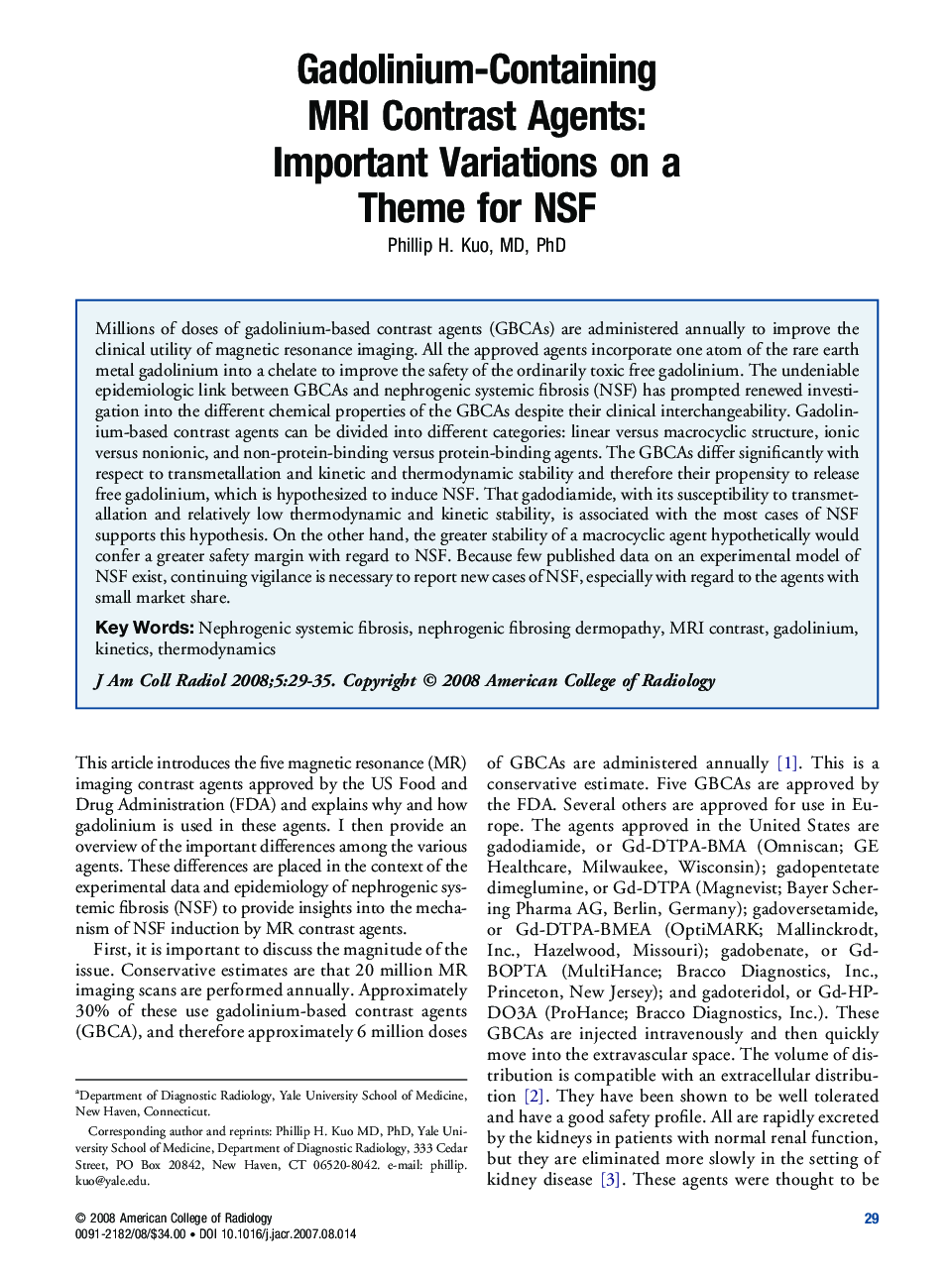| Article ID | Journal | Published Year | Pages | File Type |
|---|---|---|---|---|
| 4232466 | Journal of the American College of Radiology | 2008 | 7 Pages |
Abstract
Millions of doses of gadolinium-based contrast agents (GBCAs) are administered annually to improve the clinical utility of magnetic resonance imaging. All the approved agents incorporate one atom of the rare earth metal gadolinium into a chelate to improve the safety of the ordinarily toxic free gadolinium. The undeniable epidemiologic link between GBCAs and nephrogenic systemic fibrosis (NSF) has prompted renewed investigation into the different chemical properties of the GBCAs despite their clinical interchangeability. Gadolinium-based contrast agents can be divided into different categories: linear versus macrocyclic structure, ionic versus nonionic, and non-protein-binding versus protein-binding agents. The GBCAs differ significantly with respect to transmetallation and kinetic and thermodynamic stability and therefore their propensity to release free gadolinium, which is hypothesized to induce NSF. That gadodiamide, with its susceptibility to transmetallation and relatively low thermodynamic and kinetic stability, is associated with the most cases of NSF supports this hypothesis. On the other hand, the greater stability of a macrocyclic agent hypothetically would confer a greater safety margin with regard to NSF. Because few published data on an experimental model of NSF exist, continuing vigilance is necessary to report new cases of NSF, especially with regard to the agents with small market share.
Keywords
Related Topics
Health Sciences
Medicine and Dentistry
Radiology and Imaging
Authors
Phillip H. MD, PhD,
